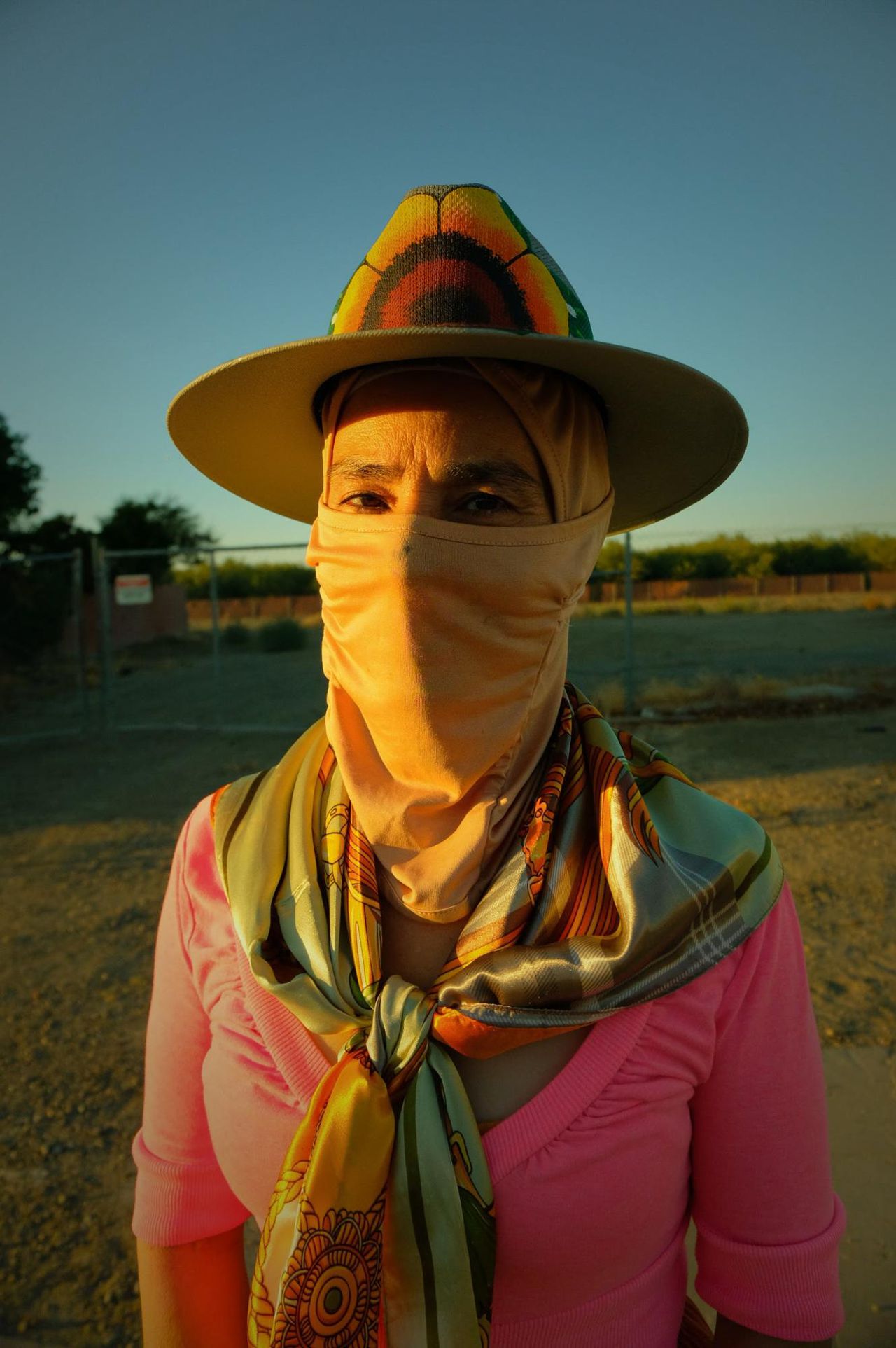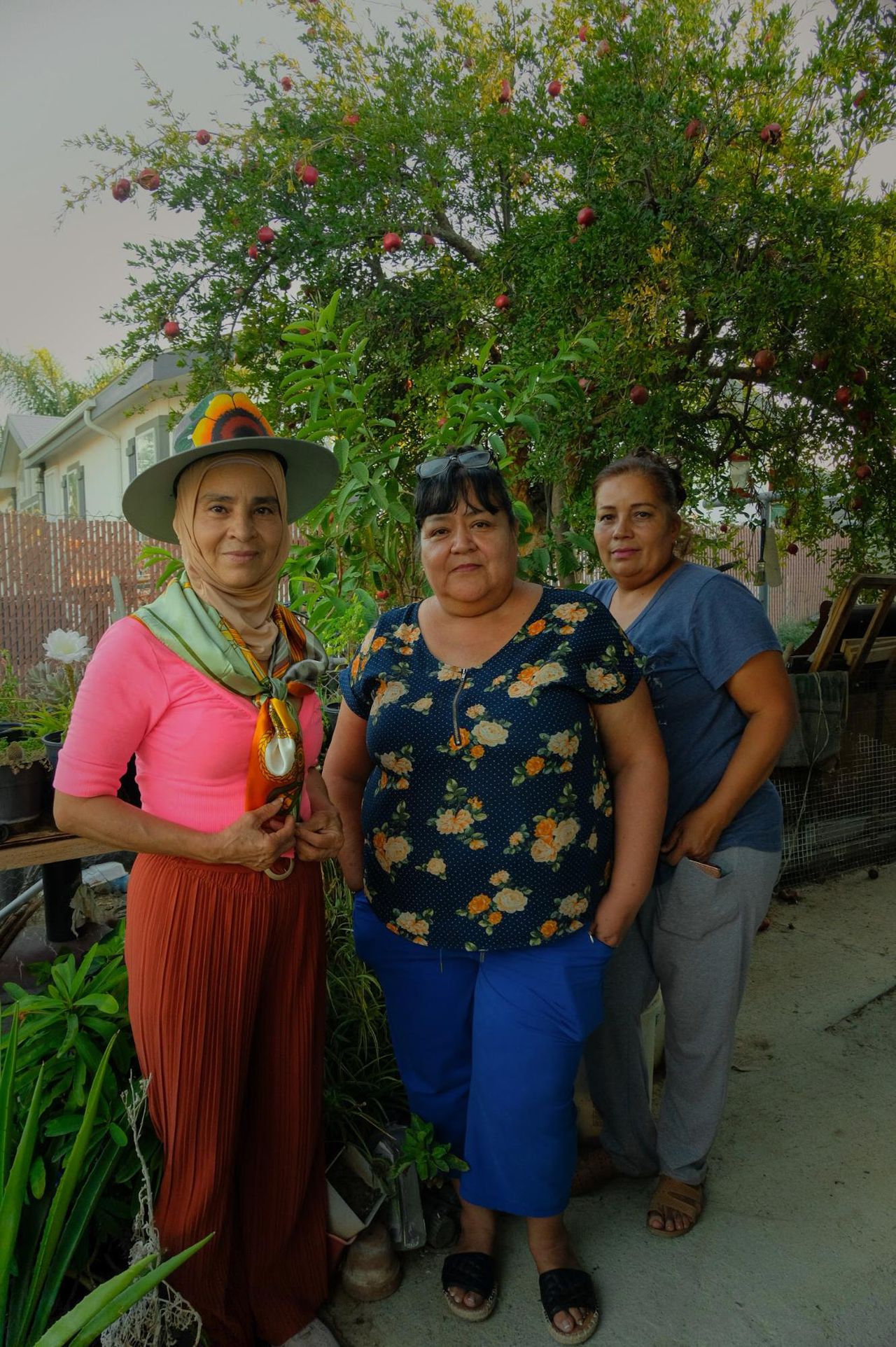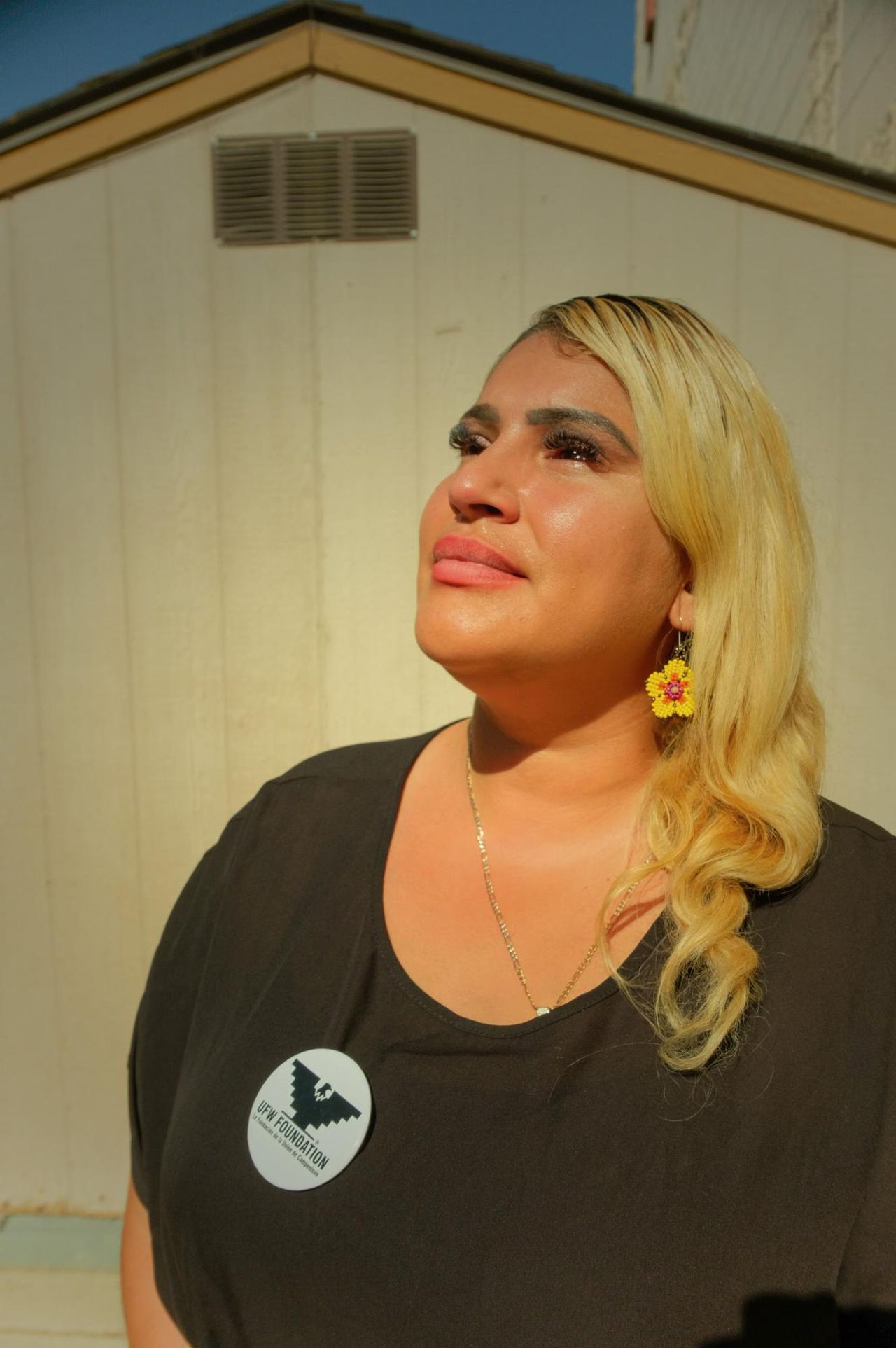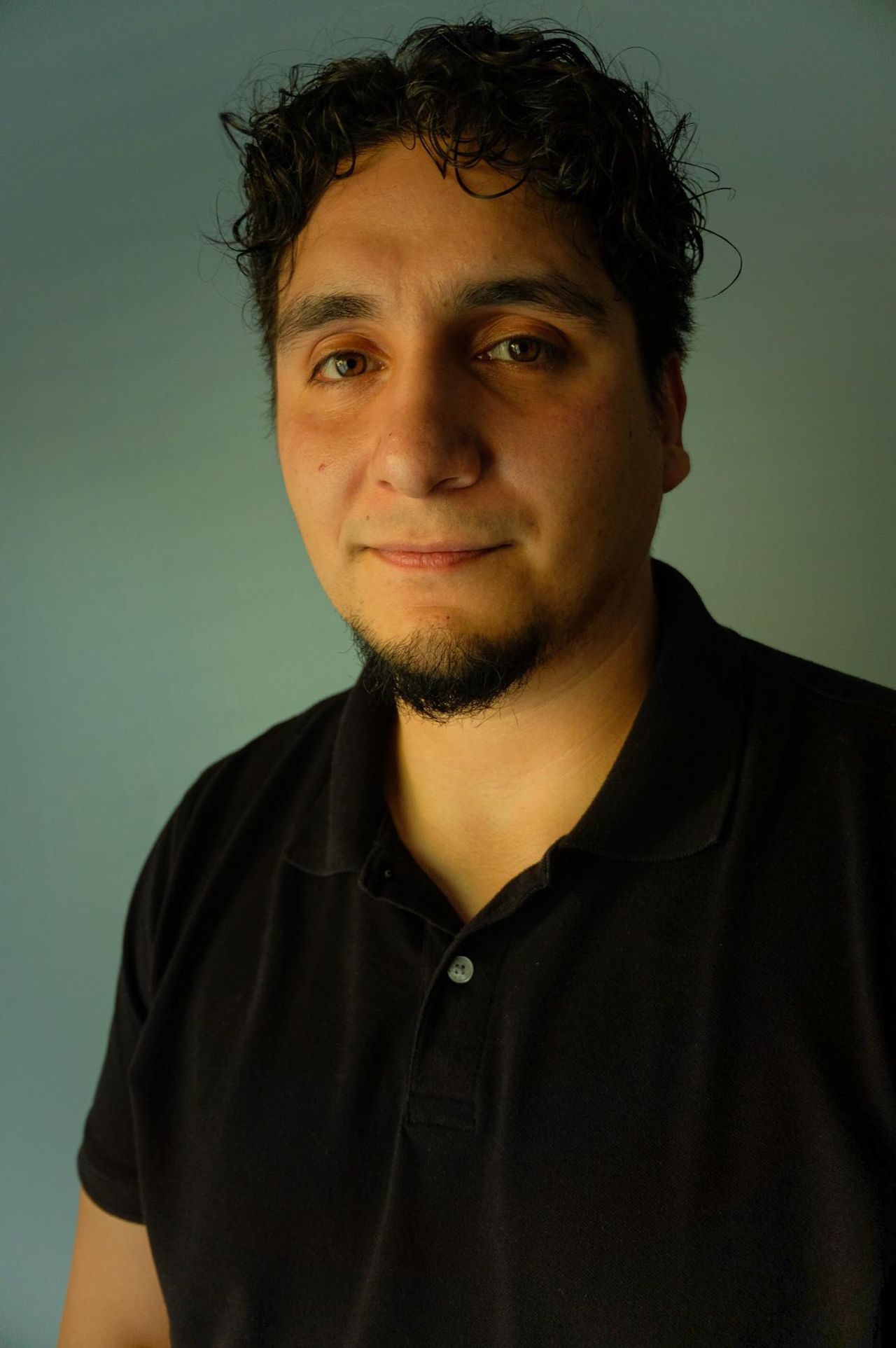Mobilizing against pesticides from the ground up
Editor’s note: Long before the term environmental justice was coined, farmworkers across the United States marched, rallied and organized to uphold the rights of essential workers who bring food to the table — including the right to pesticide protections.
Over decades, their efforts have inspired subsequent generations of activists. Today, new organizations are building on traditional forms of action (like marches, boycotts and sit-ins), including by connecting scientists and community members to fill in the gaps on pesticide exposure research. At the same time, established organizations like the union United Farm Workers pursue innovative ways to reach frontline workers with real-time information about workplace health and safety risks such as pesticide exposure, COVID, wildfire smoke and extreme heat.
Reporter Zaydee Sanchez traveled through California’s San Joaquin and Salinas valleys and spoke to four people with different journeys to activism. Together, their stories illustrate the complexities of organizing in communities faced with challenges like language differences, immigration status and systemic racism — and explain what keeps them motivated.
This story is the third of “Adrift,” a three-part series by Environmental Health News and palabra, a multimedia platform of the National Association of Hispanic Journalists, on pesticide use in California that finds rural communities of color and farmworkers are disproportionately exposed to some of the most dangerous chemicals approved for use in agriculture. Read the first to stories here and here.
By Zaydee Sanchez
Americo Prado: the first responder
Americo Prado is a leader with the United Farm Workers’ Emergency Relief Program in Bakersfield, California. Photo by Zaydee Sanchez for EHN/palabra.
The walls inside United Farm Workers’ (UFW) new offices in Bakersfield, California, are white and bare. Hints of the aroma of fresh paint drift from room to room. Americo Prado has not had time to decorate his space; through much of the pandemic he’s been working from home. Prado, a tall 27-year-old, is a supervisor for the United Farm Workers’ Emergency Relief Program in California, and is cherished by the community as a warmhearted leader in a project that began in 2020.
The nationwide service program is split into a ground effort that helps laborers with COVID vaccination and personal protective supplies, and services like food banks. Prado oversees the other half of the program, a free Monday-Friday call center that answers questions about everything from workers’ rights to counseling on immigration laws.
But it’s pesticide exposure that is often on callers’ minds.
“Folks have called us consistently regarding pesticides, either direct or indirect exposure,” Prado says. “Sometimes campesinos (farmworkers) are working from block to block, and unknowingly they’ll walk into an area that has just been sprayed. They are a quarter of the way in and start feeling the symptoms of pesticide exposure, their eyes are watering or they are getting rashes. In those instances, we mobilize.”
When dealing with pesticide reports, Prado and his team act quickly. Prado knows it’s his job to help keep the community safe. “First and foremost we make sure that farmworkers are okay. If we need to jump on a call with 911 to get them to help, we offer translation services. Health comes first,” Prado says.
A caller’s legal status might lead to hesitation among some to call 911. UFW’s history of advocating for farmworkers’ rights helps the union provide a safer alternative.
After a call, Prado and his statewide team of four collect data. An incident report is filed for an inspection by local, state or even federal farm and pesticide regulators. And, if needed, Prado’s team sends out a UFW organizer to represent, or protect, a caller.
“We had one example where a worker was undocumented, his supervisor kind of dangled that over his head, and made him dump pesticides in a nearby river,” Prado says. “So in that case we mobilized the EPA [Environmental Protection Agency]. We’ve seen a little bit of everything.”
Prado notes that the call center lines are consistently busy, with frequent reports and inquiries from farmworkers about pesticide exposure. Yet he’s convinced that many more workers remain hesitant to report the issue. “We have a lot of folks living check-to-check,” Prado says. “They would rather go silent and try to self-medicate versus reporting because they don’t want to lose out on their work. They don’t want to be blacklisted. Sadly, it’s something that happens.”
Retaliation like paycheck shorting or being blacklisted by farmers and farm-labor contractors is an often-voiced concern by farmworkers. “We try to help and inform them [workers] that, ‘hey, you do have rights,’” Prado says. “Our motto is we want to give that sí se puede attitude for that farmworker to take action.”
Prado’s passion for working with UFW began with his mother and father. His mother, originally from Tijuana, and father, from the Mexican state of Michoacán, worked in the farm fields around Oxnard, on the coast north of Los Angeles. “My mother always wanted us to have a better American education that would give us access to better job opportunities or a lifestyle,” Prado says.
As a child, Prado relocated with his family to Bakersfield, some 145 miles northeast of Oxnard. At California State University, Bakersfield, Prado earned a degree in history. After college, while working in a furniture store, Prado came across the job listing for the UFW Foundation. “I said, whoa, this is a nonprofit. I could see myself doing this and giving back. And right away I thought of my parents and my family,” Prado says.
Silvia Zamora: community power

Silvia Zamora protects herself from polluted air by wearing face coverings. After moving to Cantua Creek from Silicon Valley, Zamora says she is just beginning to learn about the effects of pesticides on humans and is grateful to see community involvement. Photo by Zaydee Sanchez for EHN/palabra.
When Silvia Zamora first moved to Cantua Creek, a small town about 45 minutes southwest of Fresno, in California’s farm-dominated San Joaquin Valley, everyone in her family was infatuated with their new surroundings. The rural town, bordered by almond and pistachio trees and seemingly endless fields of green row crops, hugs Cantua Creek, a tributary of the Fresno Slough flowing past the west side of the town. Its sunsets, with warm colors atop a tranquil countryside, leave visitors and new residents in awe.
Coming from Silicon Valley, Zamora had never been exposed to so much nature. Nor did she know much about pesticides. “The plane would be fumigating and my son would be excited because all this was new for us,” says Zamora. “The plane would pass over the house and my son would be laying on top of the roof, filming and taking photos.”
The plane Zamora refers to is used for spraying pesticides over agricultural fields. Her home sits on the other side of a fence from a grove of almond trees and fields that seasonally change from growing garlic to cotton. Zamora is an avid gardener and animal lover who spends most of her time in her backyard tending a vegetable garden and families of chickens and rabbits.
At first, Zamora says, she did not have a full understanding of the harmful effects of the chemicals. She recalls the moment that changed: A day after a pesticide applicator fumigated the neighboring garlic crop, she noticed three of her baby rabbits were dead. A few hours later she found the adult rabbits dead.
“I remember going to my neighbor and telling her what was happening,” Zamora says. “I started to put things together: The rabbits like to wander out to the crop fields and eat the roots of the vegetables. I thought to myself, just the day before they sprayed and it was super windy.”
Zamora lost 12 rabbits.
“I asked myself, if this is what is happening to animals, what could be happening to us? That is when I decided we need to raise our voices about this issue,” Zamora says.

Residents of Cantua Creek, California, (left to right) Silvia Zamora, Blanca Gomez and Julia Margarita Alonso participated in an air-monitoring study conducted by the University of California, Davis, in the summer of 2022. Zaydee Sanchez for EHN/palabra.
Her chance to advocate was realized when the Central California Environmental Justice Network organization began educating Cantua Creek residents on the harmful effects of pesticide exposure. An opportunity presented itself for Zamora and fellow Cantua Creek residents: Monitors were needed for an air-quality study conducted by researchers from the University of California, Davis. The study, which recruited participants across three San Joaquin Valley counties, is aimed at better understanding pesticide drift from agricultural fields into nearby communities.
The participants were instructed to carry small backpacks outfitted with pumps that suck air into sampling tubes over eight hours a day. They would wear the backpacks while cooking, cleaning and gardening.
“It is really nice to see that there are people that care about our communities,” Zamora says about the study. Results are still being analyzed, but Zamora hopes their efforts will shed new light on how families are exposed to pesticides in the course of daily life. “This is important for everyone and in some way we are already leaving [through aging]. But many generations are coming and we need to do something now for those generations. There are children who are born sick and it is very painful to see.”
Linda Martinez: the fighter

Linda Martinez has been a program coordinator with United Farm Workers for about four years. Her passion for helping the farmworker community is rooted in her love for her grandmother Herlinda, after whom she was named. Photo by Zaydee Sanchez for EHN/palabra.
The vibrant community event at the Leo Cantu Community Center in San Joaquin, California, is filled with local residents speaking with organizers. The event aims to bring free community services closer to people, and visitors learn about COVID testing, legal services and farmworkers’ rights, among other things. A long table covered with a red cloth banner features the words United Farm Workers. Linda Martinez, the union’s Fresno organizing coordinator, sits with a look of anticipation, dressed in a black blouse and fiery red lipstick, as residents approach her table.
Prior to becoming an organizer, Martinez spent years working directly with farmworkers and their families. Her approach to the work is still up-close and very personal; she says she sees her grandmother in every farmworker she helps.
Martinez grew up in a trailer home, living with her grandmother, Herlinda Martinez, in Huron, California, a small town about a 50-minute drive southwest of Fresno. Herlinda was a farmworker, and although she only spoke Spanish, she was a fighter, well aware of her rights. Martinez recalls being a six-year-old and translating her grandmother’s demands to farm mayordomos (supervisors) when she suspected being shorted some pay. “She would say, ‘Tell them, Linda, and tell them correctly, because here I am missing $1.00,’” Martinez says. She was named after her grandmother and says her grandmother’s strength and willingness to fight led her to advocacy.
“I am also a fighter, and I love it. I love it because I don’t think I am afraid anymore. I am learning by educating myself professionally. I can get in and defend them [farmworkers]. If they allow me to, I will go in and speak and report it,” she says.
Martinez’s day often involves organized events on matters like immigration rights, blood drives and food banks.
In addition, she is the local organizer often sent by the UFW’s call center when someone needs in-person assistance. The nature of the calls vary, but when one involves possible pesticide exposure, Martinez moves quickly: First, she makes sure the individual is safe, then looks at the required signs that should notify workers of pesticide applications. Her job involves gathering details for her report to the local agricultural commissioner or the California Department of Pesticide Regulation. She’s become familiar with the signage. “Yellow flags mean they sprayed about two days ago,” Martinez says. “Red means definitely do not enter.”
The visual notifications are critical for Indigenous farmworkers from Mexico who neither read nor speak English or Spanish. California is estimated to have 165,000 Indigenous farmworkers from Mexico working in the state’s farmlands; more than half speak Mixteco and another 30 percent speak Zapoteco. Martinez has confronted language barriers with this community herself: When a translator is not with her she has to rely on signs and head nods to guide individuals. “If you really want to help someone it doesn’t matter their language or their culture,” she says. “If you really try, you can get your point across.”
Victor Julian Torres: the next generation

Victor Torres has been advocating for young people to get involved in pesticide reform in his hometown of Greenfield, California. He and his brother, Santiago, educate their friends on the harmful effects of pesticides. “We are the future,” Torres says. Photo by Zaydee Sanchez for EHN/palabra.
Victor Julian Torres, a junior at Greenfield High School in Greenfield, California, has been a member of the coalition Safe Ag Safe Schools (SASS) since he was in sixth grade. The coalition consists of more than 30 organizations focused on protecting school children from hazardous pesticides in California’s farm-rich Monterey County. Torres, a slender teen with a welcoming manner, faced a life-threatening incident that pushed him into activism educating young people in the region about harmful effects of pesticide exposure near schools.
Greenfield is about 40 minutes southeast of Salinas, in the heart of a valley studded with vineyards and fields of vegetables bound for supermarkets around the country. A 2014 report by the California Department of Health found that Monterey County had the highest number of schools near the highest concentration of pesticide use in the state. The campus of Greenfield’s Vista Verde Middle School, where Torres attended the sixth grade, is surrounded by vineyards to the west and south.
In the early morning of February 9th, 2017, a day that Torres recalls as a regular school day, he was inside a classroom, with the door open, when he began having trouble breathing.
“I started picking up a foul scent and then not too long later I started having trouble getting air,” he says. “It was very weird because nothing had gone wrong that day, it was going fine, and then all of a sudden I’m having trouble breathing. It caught me completely off guard. It was very surreal.”
A doctor diagnosed an asthma attack. Torres knew he was asthmatic, but had never experienced a severe attack. He was unaware not only of what was happening to his body, but what was causing him to gasp for air. Torres was not alone in the confusion. His teacher tried to give him water to see if he might be dehydrated. But that didn’t work, so Torres was sent to the school nurse. The nurse ended up calling Torres’ grandfather, who lived across the street. Once at his grandfather’s house, they called an ambulance.
After the traumatic experience, Torres decided to get involved with SASS. He and his younger brother Santiago began speaking to other young people in the community. Santiago’s friends were inspired and joined the brothers in the movement.
A highlight in Torres’s activism came in 2019, when SASS and its coalition partners pushed for a ban on the organophosphate pesticide chlorpyrifos, which is linked to lower birth weight and developmental problems in children. “After countless back and forth to Sacramento trying to get the attention of the EPA [Environmental Protection Agency], the governor, and attending a walkout at the EPA’s building in Sacramento, while it was pouring rain, we got it [chlorpyrifos] banned,” Torres says. “It was a pretty big milestone for me but I feel like the job is not yet done.”
In October of 2019, the California Department of Pesticide Regulation announced a ban on chlorpyrifos in agriculture. The U.S. EPA ended its use on food products in 2021.
Torres continues to encourage his peers to get involved in community organizing. “The youth is very loud and we need to stay involved because we are the next generation,” he says.
—

Zaydee Sanchez is a Mexican-American visual storyteller, documentary photographer, and writer. Inspired by her upbringing in California’s agricultural San Joaquin Valley, Tulare, her work is rooted in addressing the complexities of migration. With a focus on labor workers, gender, and displacement, she seeks to make meaningful and impactful work.
Zaydee Sanchez is a Mexican-American visual storyteller, documentary photographer, and writer. Inspired by her upbringing in California’s agricultural San Joaquin Valley, Tulare, her work is rooted in addressing the complexities of migration. With a focus on labor workers, gender, and displacement, she seeks to make meaningful and impactful work.
